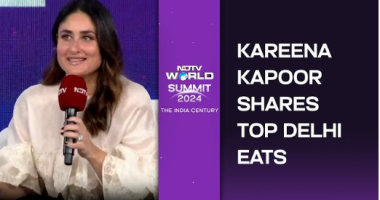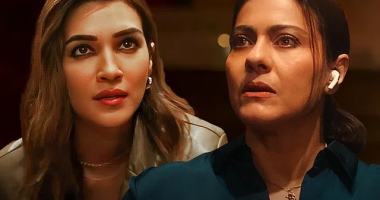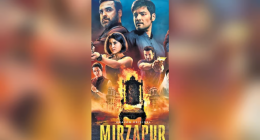In a remarkable cinematic shift that’s redefining the contours of Indian entertainment, South Indian cinema is no longer playing second fiddle to Bollywood. The tectonic plates of the Indian film industry are shifting dramatically—ushering in a new era where Tamil, Telugu, Malayalam, and Kannada films are not only standing toe-to-toe with Hindi cinema but also challenging it head-on in terms of box office clout, global outreach, and narrative innovation.
Once considered regional fare with a loyal but geographically limited fanbase, South Indian films have evolved into cultural juggernauts with pan-India and even international aspirations. Today’s South Indian blockbusters command budgets rivaling their Bollywood counterparts, feature multi-language releases, and harness massive star power and storytelling finesse. As a result, they’re increasingly finding themselves locked in high-profile box office duels with Hindi films—duels that are emblematic of a broader power shift within Indian cinema.
The Battlelines Are Drawn: South vs. Bollywood’s Big Guns
Let’s delve into the headlining cinematic face-offs that are emblematic of this seismic shift.
Mohanlal’s ‘L2: Empuraan’ vs. Salman Khan’s ‘Sikandar’ – A Clash of Legacies
A seismic cinematic collision is on the cards with the release of L2: Empuraan, the hotly anticipated sequel to the 2019 political action drama Lucifer, which not only redefined Malayalam cinema but also set a new benchmark for regional blockbusters.
Mohanlal’s Metamorphosis into Khureshi-Ab’raam
Directed by Prithviraj Sukumaran, L2: Empuraan will dive deep into the shadowy world of Stephen Nedumpally—now revealed as the mysterious crime lord Khureshi-Ab’raam. With principal photography stretching across several countries and a strategic multilingual release in Malayalam, Tamil, Telugu, Hindi, and Kannada, the film is tailor-made for a pan-Indian—and global—audience.
The thematic complexity, espionage-laced screenplay, and Mohanlal’s magnetic screen presence make Empuraan not just a sequel, but an evolution in South Indian cinematic storytelling.
Salman Khan’s ‘Sikandar’ Stumbles
Pitted against Empuraan is Bollywood’s quintessential mass hero Salman Khan in Sikandar, directed by AR Murugadoss and produced by Sajid Nadiadwala. Despite the initial buzz—bolstered by a slick trailer and a glamorous pairing with Rashmika Mandanna—the film underperformed, barely scraping past the ₹100 crore milestone by its seventh day.
Critics have called out the lack of freshness in the screenplay and formulaic action sequences—signs that Bollywood’s star-driven machinery may be faltering against the layered narratives emerging from the South.
Ajith Kumar’s ‘Good Bad Ugly’ vs. Sunny Deol’s ‘Jaat’ – Two Titans, One Battlefield
Two alpha-male driven narratives. Two cinema industries. One inevitable clash.
Ajith’s Stylish Rebellion
Ajith Kumar returns in Good Bad Ugly, helmed by Adhik Ravichandran. Promising a high-concept action thriller soaked in neo-noir aesthetics, the film is rumored to feature Ajith in a triple-shaded role that blurs the lines between heroism and villainy.
With an avant-garde screenplay and high-octane stunts choreographed by international teams, Good Bad Ugly looks poised to redefine Ajith’s on-screen persona.
Sunny Deol’s Return to Rural Roots
On the other side is Jaat, a rustic action drama anchored by Sunny Deol, under the direction of Gopichand Malineni. Drawing from Deol’s legacy of playing raw, earthy characters with an emotional backbone, Jaat attempts to rekindle the old-school Bollywood masala. However, questions loom about its ability to engage Gen Z audiences who are increasingly drawn to stylized storytelling and nuanced character arcs.
Rajinikanth’s ‘Coolie’ vs. Hrithik Roshan-NTR Jr’s ‘War 2’ – The Pan-India Heavyweights Duel
This is perhaps the most high-stakes battle in the Indian cinematic landscape for 2025.
Coolie: Rajinikanth x Lokesh Kanagaraj = Cinematic Dynamite
Superstar Rajinikanth’s Coolie, directed by Lokesh Kanagaraj of Kaithi and Vikram fame, is primed to explode on August 14, 2025. With a gripping narrative rooted in the Lokesh Cinematic Universe (LCU), Coolie is more than just another Rajini entertainer—it’s a cinematic event.
The film reportedly features an intense narrative interspersed with philosophical undertones, gritty visuals, and stylized action sequences. Add to this powerhouse cameos by Aamir Khan, Nagarjuna, Sivakarthikeyan, and Upendra, and you have a multi-starrer with nuclear potential.
War 2: Spy Universe Goes Global
War 2, the second chapter in Aditya Chopra’s espionage-driven Spy Universe, brings together Hrithik Roshan’s slick agent Kabir with NTR Jr’s enigmatic adversary. Directed by Ayan Mukerji, the sequel to 2019’s War promises scale, suspense, and a globe-trotting narrative steeped in counter-intelligence.
While War 2 boasts of franchise familiarity and high-octane spectacle, Coolie’s raw energy and Kanagaraj’s neo-realistic vision might just tilt the balance.
Yash’s ‘Toxic’ vs. Sanjay Leela Bhansali’s ‘Love & War’ – Clash of Genres, Clash of Eras
If there’s one box office clash that’s as thematic as it is commercial, it’s Toxic vs. Love & War. Set to release during the grand festive confluence of Ugadi, Gudi Padwa, and Eid in March 2026, this duel will test audience loyalty across genres.
Toxic: Yash Reinvents Myth and Masculinity
Toxic: A Fairy Tale for Grown-Ups marks Yash’s return after KGF: Chapter 2 and is directed by Geetu Mohandas, known for her offbeat, character-driven storytelling. Shot in English and Kannada, the film marries gritty action with surreal allegory, aiming at a global arthouse-meets-commercial appeal.
The cast is an ensemble powerhouse—Kiara Advani, Nayanthara, Tara Sutaria, and Huma Qureshi. Set against a dystopian backdrop, Toxic explores themes of morality, violence, and redemption through a dark fairy tale lens—something Indian cinema hasn’t quite seen before.
Love & War: Bhansali’s Epic Heartbreak
On the opposite spectrum, Sanjay Leela Bhansali’s Love & War reunites Ranbir Kapoor and Alia Bhatt on screen alongside Vicky Kaushal. With his trademark opulence, elaborate set design, and emotionally charged storytelling, Bhansali is betting on old-school romance and wartime drama to strike a chord.
While Bhansali’s vision is grandiose, there’s a looming question—can emotionally complex dramas hold ground against stylized high-concept action in today’s adrenaline-craving market?
South Indian Cinema’s Strategic Evolution: What’s Driving This Ascent?
The rise of South Indian cinema is no mere coincidence. It’s the result of a multi-pronged transformation:
1. Pan-Indian Narratives, Multilingual Releases
South filmmakers have mastered the art of crafting stories with universal appeal—be it familial loyalty in RRR, political allegory in Lucifer, or mythical reimaginings in PS-1. With dubbing and subtitles available from day one, linguistic barriers are melting away, making a Tamil or Telugu film as accessible to a Mumbaikar as to a Bengaluru native.
2. Technical Sophistication and Bigger Budgets
The technical quality of South Indian films has seen a dramatic rise. From VFX-laden spectacles like Baahubali to real-location shoots across Europe, Africa, and the Middle East for films like Empuraan, the production scale now rivals Hollywood, let alone Bollywood.
3. Narrative Innovation and Genre Diversification
While Bollywood has often relied on formulaic family dramas and romantic musicals, South Indian cinema has diversified its genres—spanning historical epics (Sye Raa Narasimha Reddy), futuristic thrillers (Maanaadu), and even experimental cinema (Super Deluxe). This intellectual boldness is paying dividends.
4. Audience Loyalty and Fan Culture
Stars like Yash, Allu Arjun, Jr NTR, Vijay, and Rajinikanth enjoy an unparalleled fan following. These fandoms translate into thunderous opening weekends, viral social media trends, and global box office numbers—propelling South cinema’s market share beyond the Southern states.
The Cultural Conversation is Changing
This is not just about box office numbers or star power—it’s about a shift in India’s cultural narrative. South Indian cinema is now influencing fashion, music, internet culture, and even political discourse. Films like Pushpa and RRR have broken through to meme culture, music charts, and Oscar buzz alike.
In contrast, Bollywood finds itself navigating a more cautious path, caught between appeasing legacy audiences and trying to reinvent its identity in an OTT-dominated era.
Looking Ahead: A Multipolar Cinematic Future
With each new release calendar, the Indian film landscape becomes more decentralized and democratically exciting. Gone are the days when Hindi cinema dictated the narrative. Today, it coexists—and competes—with Southern cinema that’s hungrier, bolder, and more globally savvy.
The future of Indian cinema lies not in regional silos but in pan-Indian, multi-lingual, and genre-fluid storytelling. As long as filmmakers continue to take risks, audiences will reward them—not by geography, but by quality.
It’s No Longer Bollywood vs. South Cinema—It’s Indian Cinema, Reimagined
What we’re witnessing is not a regional turf war but a creative renaissance. South Indian cinema’s rise is a wake-up call for the Indian film industry at large: innovate or be eclipsed.
These box office battles are more than date clashes—they are symbolic of a new cinematic ecosystem where diversity is the new mainstream, and competition breeds excellence.
Welcome to the new India of cinema—where every story, no matter the language, has a stage, a screen, and an audience waiting.








